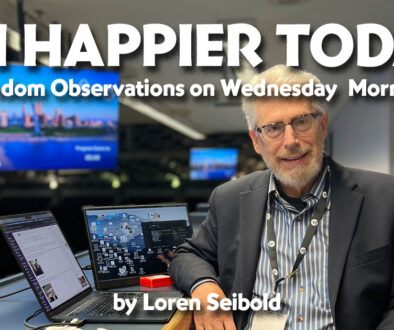Our Controversy Over The Great Controversy, Part 1: Premodern Roots
by Jim Walters | 2 July 2024 |
Across North America, and possibly elsewhere, preaching about one of the central documents of Seventh-day Adventism, The Great Controversy, is a mixed bag. The variance isn’t an issue of intelligence or educational attainment. It’s one of differing worldviews and deeply opposing sets of orienting guideposts.
Compare the Loma Linda University Church with the Pioneer Memorial Church at Andrews University. Veteran pastor Randy Roberts at Loma Linda has rarely addressed end times. But this last summer he preached a seven-part series entitled “Heaven Cares: The Tender God of the Apocalypse.” Roberts took an idealist approach, in which he highlighted themes that may apply “in every day and in every time.”
In contrast, the relatively new lead pastor Shane Anderson of Pioneer Memorial at Andrews University in Michigan preached to his former congregation a 21-part series called “Prophecies of Hope,” taking a literal futurist approach—the result being sermons such as “God’s Remnant Church: Prophecy’s Movement of Destiny.”
The notion of controversy between good and evil resides deep within the Adventist DNA, beginning with the Great Disappointment when good people felt they were destined to escape evil. The literalist Millerite adventists (small “a”) have been succeeded today by Seventh-day Adventist literalists who, 180 years later, campaign to distribute one billion copies of The Great Controversy (TGC), detailing how God’s Adventist remnant will triumph.
Immanuel accepts all of us
The basic argument of this three-part series is that God accepts each of us, no matter what our conscientiously held treatment of our classic book, TGC. Taking a cue from the Divine incarnation, I argue that God accepts us where we are, where prayer and study have led us, and considering our various temperaments, educations, cultures, and resultant worldviews. God-with-us—Immanuel—indicates that God’s inclusive love respects and embraces all believers.
I will briefly examine three approaches to our Adventist understanding of The Great Controversy: the pre-modern, modern, and post-modern. I suggest here that different kinds of believers, in this now-increasingly large and complex church, might complement one another rather than be in conflict.
The pre-modern, error-free, perfect word
Why begin with the pre-modern approach? Shouldn’t we start with the modern, since that’s how most of us identify?
It’s easy to just assume the value of dispassionate, reasoned discourse. But such a value is so modern! The roots of Western culture, even 300 years ago, were very different—even medieval. Our Adventist roots of 200 years past are largely pre-modern, too, particularly in our understanding of the Bible.
However, let’s be clear: early Adventists must not be blamed. Because they conscientiously followed truth as they understood it, they should rightfully be praised!
Pre-modern Adventist members accept TGC simply as it reads—every word without question. If questions arise, it’s Satan at work. Faithful members should emphasize straightforward belief, the clear and obvious reading of the text.
The primary rationale is more implicitly assumed than explicitly argued. Adventist pioneers took inspired writings literally, and so have most Adventist thought leaders—to say nothing of lay members—ever since. Given that author Ellen White is a divine prophet, and since TGC is her book, it should be believed unerringly, never questioned.
Our church’s roots are in a strictly literalist understanding of Biblical interpretation. The literalist mentality permeated the very air our pioneers breathed. Historian Ernest Sandeen, in his The Roots of Fundamentalism: British and American Millenarianism 1800-1930, states that Biblical literalism was the common belief among American protestants by the late 19th century. He documents that a strict variety of literalism was widespread across denominations as early as the late 18th and early 19th centuries. That stricter literalism held that Biblical autographs were error-free. The two-volume Union Bible Dictionary, very popular with 1830s Sunday-school teachers, held that “facts stated and doctrines taught” in the Bible were “without the possibility of error.”
In Adventism, this human construction of a letter-perfect Scripture would be applied to Ellen White’s writings by two of the developing church’s fundamentalist thinkers: Claude Holmes and Judson Washburn.
Holmes wrote, “Sister White is inspired, as much as any Bible prophet.” Both Holmes and Washburn freely referred to Ellen White’s writings as infallible and inerrant—this from Michael Campbell, Encyclopedia of Seventh-day Adventists on Holmes. Eleven years after Ellen White’s death, Holmes wrote to her son Willie: “I love your mother’s writings, they are scripture to me.” Similar to inerrant inspiration is the “plenary” view of inspiration—meaning that every word in the Bible is inspired and to be taken literally.
According to historian Gilbert Valentine, this view of Biblical inspiration “dominated Adventist understanding of the inerrant authority of Scripture in the mid-1890s,”—and if this view held in the late 19th century, it was even more prominent in mid-20th-century Adventism, as seen, for example, in the church’s view of a literal heavenly sanctuary.
History informs the present
This historical information is background for understanding why the Pioneer Memorial Church’s Shane Anderson would preach a 21-sermon series, applying a literalist reading of the apocalyptic prophecies of Daniel and Revelation to twenty-first century church life. Ellen White’s 19th-century, American-based prophecies are preached as present truth, with Anderson asserting that “God said that all the world will worship the beast power” through Sunday worship. Anderson sees no need to view this statement as written in a mid-19th century rural New England context. Furthermore, White’s world was fervent Sunday-keeping American Christians, versus today’s world which is dominantly—three to one—non-Christian.
The historical perspective illuminates General Conference (GC) president Ted Wilson’s current campaign to distribute one billion copies of TGC around the world. As the GC communication department said, this project helps fulfill the true mission of the church. Ellen White “desired to see [The Great Controversy] distributed more widely” than her other books. Conflating Ellen White’s and the Bible’s authority, TGC “provides solid biblical answers to what has happened in the past, what is happening in the present, and what will happen in the future.”
A Ministry magazine article on “The Great Controversy Theme” couldn’t be grander in its theological claims for TGC. It refers to the late Stephen Hawking, who said that if science could explain why the universe exists “we would know the mind of God.” Author Herbert Douglass answers Hawking thus:
“Seventh-day Adventists have been given that—a perspective which provides a ‘theory of everything.’ It [TGC] introduces us to the ‘mind of God.’ We didn’t discover it; it was given to us. We call it the Great Controversy Theme.”
Where’s the movement?
George Knight, dean of Adventist church historians, indicates that an orthodoxy formed after Ellen White’s death that went largely unchallenged until the late 1960s, seeing the prophet as
“not only authoritative for exegesis and theology but also inerrant, infallible, 100 years ahead of her time, of a flawless character, and for many, verbally inspired.”
The church’s standard view of Ellen White can now knowledgeably be understood as pre-modern. Regarding our church’s classic The Great Controversy, the pressing question is whether our Adventist movement must remain tied to original literalist views.
Stay tuned.
 James W. Walters is professor emeritus of ethics at Loma Linda University.
James W. Walters is professor emeritus of ethics at Loma Linda University.




